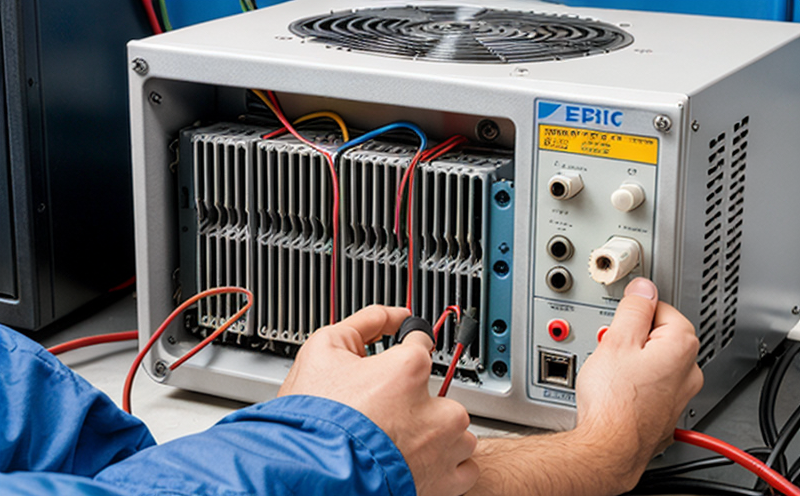IEC 60092-707 Frequency Stability Testing of Marine Power Systems
The International Electrotechnical Commission (IEC) standard IEC 60092-707 specifies the requirements for frequency stability in marine power systems. This service ensures that the electrical and power systems aboard ships are capable of maintaining stable frequencies under various operating conditions, which is critical for the safe and efficient operation of shipboard equipment.
Frequency stability testing is a crucial aspect of ensuring compliance with international regulations such as IEC 60092-707. It helps in identifying any potential issues that could arise from fluctuations in frequency, thereby enhancing safety and reliability on board. This service employs advanced instrumentation to simulate real-world scenarios that ships may encounter during their operations.
In the context of marine power systems, frequency stability is essential for maintaining synchronization between generators and loads, which directly impacts the performance of all electrical equipment aboard a ship. From lighting systems to navigation aids, every component depends on consistent voltage levels provided by stable frequencies. Any deviation from these standards can lead to operational inefficiencies or even system failures.
The testing process involves subjecting the power system to various stress conditions that mimic actual maritime environments. These include changes in load demand, variations in ambient temperature, and fluctuations in supply voltage. By doing so, we ensure that the tested systems meet not only IEC 60092-707 but also other relevant standards like IMO regulations for shipboard electrical installations.
During testing, our team will prepare the specimen by connecting it to a dedicated test rig designed specifically for this purpose. The rig allows us to apply controlled inputs that replicate the operational conditions experienced by marine power systems during typical voyages. After completing each phase of testing, detailed reports are generated, providing insights into how well the system performed under different stress levels.
One key factor in conducting successful frequency stability tests is understanding environmental factors such as humidity and salt content in air which can affect insulation performance. Another important consideration is ensuring proper grounding of all equipment involved in testing to prevent electrical hazards. Additionally, we must account for electromagnetic interference (EMI) since it can significantly impact measurement accuracy.
- Environmental parameters like temperature, humidity, and altitude are carefully controlled during the test.
- Proper grounding of equipment is ensured to minimize risks associated with electrical shocks or fires.
Industry Applications
The application of IEC 60092-707 frequency stability testing extends beyond just compliance; it plays a vital role in improving overall maritime safety and efficiency. Quality managers responsible for overseeing procurement processes can benefit from knowing that suppliers adhere to these stringent standards when designing and manufacturing electrical components used on ships.
Compliance officers play an equally important part by ensuring that all onboard systems comply with applicable regulations, including those set forth by IEC 60092-707. R&D engineers involved in developing new technologies related to marine power generation and distribution can also use this service to validate their prototypes against established benchmarks.
- Ensures adherence to international standards for electrical systems on board ships
- Helps identify potential weaknesses early in the design phase through rigorous testing protocols
Environmental and Sustainability Contributions
The implementation of IEC 60092-707 frequency stability testing contributes positively towards environmental protection efforts within the shipping industry. By ensuring stable frequencies across all electrical systems on board, there is reduced energy consumption which translates into lower greenhouse gas emissions.
Sustainable practices are becoming increasingly important as the world seeks ways to mitigate climate change impacts. The marine sector has been identified as one of the major contributors to global carbon footprint due to its reliance on fossil fuels for propulsion and power generation purposes. Through efficient management of electrical systems via frequency stability testing, operators can reduce fuel consumption rates thereby minimizing their environmental impact.
- Reduces energy waste by optimizing system performance
- Promotes the use of renewable energy sources when possible
Use Cases and Application Examples
In practice, frequency stability testing is used extensively in various scenarios involving marine power systems. For instance, during shipyard inspections prior to delivery, this service helps verify that newly installed electrical components meet specified performance criteria.
Another common use case occurs post-installation when existing equipment undergoes modification or upgrade. This ensures compatibility between older and newer parts while maintaining overall system integrity. Additionally, regular maintenance schedules incorporate periodic retesting of critical areas to ensure ongoing compliance with IEC 60092-707.
- Pre-delivery inspections at shipyards
- Post-installation modifications or upgrades
- Regular maintenance schedule updates





